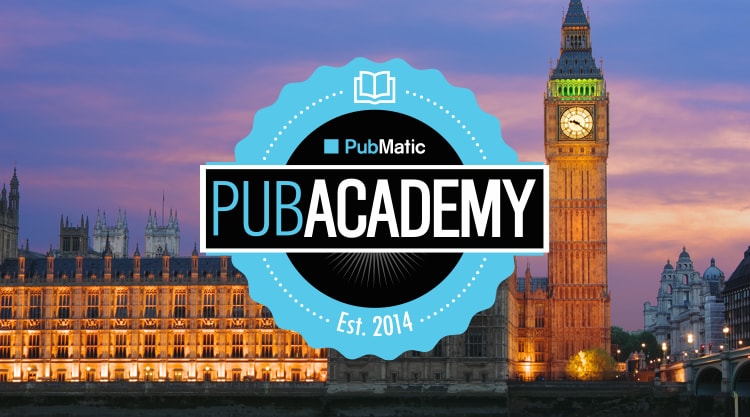Our penultimate PubAcademy of the year took place on November 9th here in London, bringing publishers and buyers together to discuss the choices publishers are forced to make in order to successfully navigate the sometimes choppy waters of programmatic. We also took this opportunity to discuss how sellers and buyers can work better together to ensure all parties involved realise the value on offer.
Through the discussions that took place, we were able to identify the four key themes that seemed to resonate well with attendees.
Publishers Want to Take Back Control of Ad Decisioning
It would seem that the majority of our industry is familiar with the concept that today’s legacy ad serving infrastructure is ill equipped to help publishers manage and capture holistic yield. It is clear that many publishers are still trying to figure out how they can explore and implement alternative, open ad serving set-ups whilst minimizing the disruption to their businesses.
Working with a holistic monetization platform such as PubMatic SEVEN, with its modular approach, allows publishers to choose which products or solution sets they want to integrate and when. Only by having this choice will publishers truly be able to realise the full potential of their digital assets.
Publishers Want Partners, Not Tech Vendors
While the continued evolution of the market, its increasing complexity, and the plethora of tech vendor choices available all play a role in driving programmatic spend, they have just as much potential to inhibit growth as well.
In that light, our key panelists highlighted the importance of establishing two-way partnerships between publishers and their tech vendors. When publishers are evaluating technology partners, the primary concern is finding ones that are open, transparent and willing to integrate with each other for the good of the publisher and the overall digital media market.
Header Bidding is Still a Hot Topic, But The Conversation is Evolving
During our discussion we challenged the hypothesis that header bidding is little more than “waterfall” 2.0. Many publishers are still allocating priorities as they continue to build out strategies around their direct sold books of business and where the sweet spot can exist between the IO and programmatic direct. Regardless, all of our publisher panelists were in agreement that header bidding has had a positive effect on yield and that it’s here to stay. The conversation is evolving, as is the need. Having to manage multiple header tags and the impact they have on page performance and user experience remains a concern.
Hence the exploration of the pros and cons of solutions that address these potential issues, such as wrapper tags and server side integrations, are going to be vital over the coming months. Looking forward, there remains a lot of uncertainty around whether open source or proprietary is the route to take. The jury’s still out, but expect a verdict soon.
Publishers and Buyers Still Have Work to Do to Make the Marriage A Happy One
Our panel of publishers and buyers shared some of their key asks of each other to help everyone realise the potential that programmatic offers. In no particular order:
- Make PMP deals more discoverable and design them to meet buyers’ needs. Building PMP deals around curated audiences, for example, or being sure to support the buying models of agencies;
- Design PMPs to be ‘always on’ and proactively troubleshoot when they are underperforming;
- Design offers that support the buying models that agencies will be adopting in 2017—the combination of programmatic AND automated guaranteed, for example;
- Provide access to more targetable and segmented second-party data to drive increased bid density;
- Finally, communicate more frequently and be more transparent.
About PubAcademy
PubAcademy is a global industry education initiative PubMatic established to help ensure our customers and partners are in the best position to achieve their individual business goals and address the unique set of challenges that they face in this ever changing world of programmatic.





